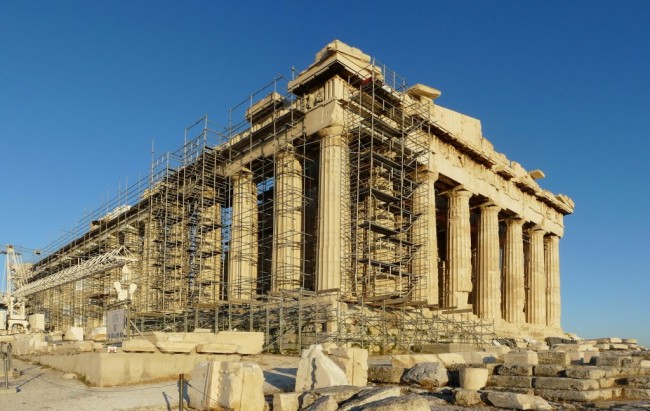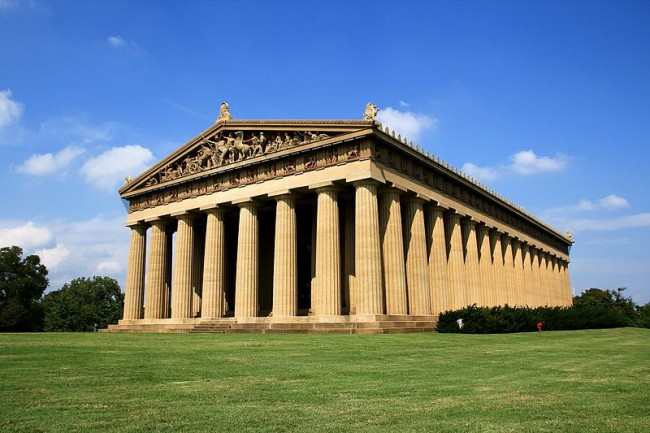A Lecture at the Parthenon
Last week, I attended a lecture at the famous Parthenon in Centennial Park. As a Classics major, having a full-scale reproduction of one of the most famous structure of the ancient world has been a dream. I have learned about the Parthenon frieze in classes, and then walked right over to the park to see them for myself. No one outside of the cities of Athens and Nashville are able to make their studies so real, and even in Athens you can’t really see the Parthenon completely through all of the reconstruction lattices. So when I saw a sign for a lecture about the Parthenon that was held within our Parthenon itself, I had to be there. (Not to mention, free entrance into the Parthenon and a reception afterwards!)


The main chamber of an ancient temple is known as the cella and it was built to create a religious experience with an expansive enclosed space, like a Christian basilica. The effect of this is some wonky acoustics when our speaker used the microphone, but also a very impresssive effect. Behind our lecturer stood the cult statue of Athena, a statue nearly as tall as the roof itself that looms over all visitors.

Our speaker focused on discussing the visibility of a certain section of sculptural design on the outside of the cella walls. I won’t bore you with the details too much, but her study put up recreations of the designs and tried to see if they would be visible for the average temple visitor. Experimental archaeology like this is one of the only ways to really understand what it would have been like for a Athenian to visit the Parthenon 2500 years ago. Living on a campus with neo-classical architecture (i.e. columns and bricks) and right across the street from a full replica Parthenon has made Nashville an ideal place to study Classics.
For the majority of people who will never make it to Athens to see the original Parthenon, the Nashville replica serves as a constant reminder of the city’s commitment to the arts and to remembering where our cultural inspirations come from. Just as understanding the Parthenon’s architecture can help us understand where our modern architecture comes from, understanding the history and value system behind the people who built the temple helps us to better understand our modern culture.